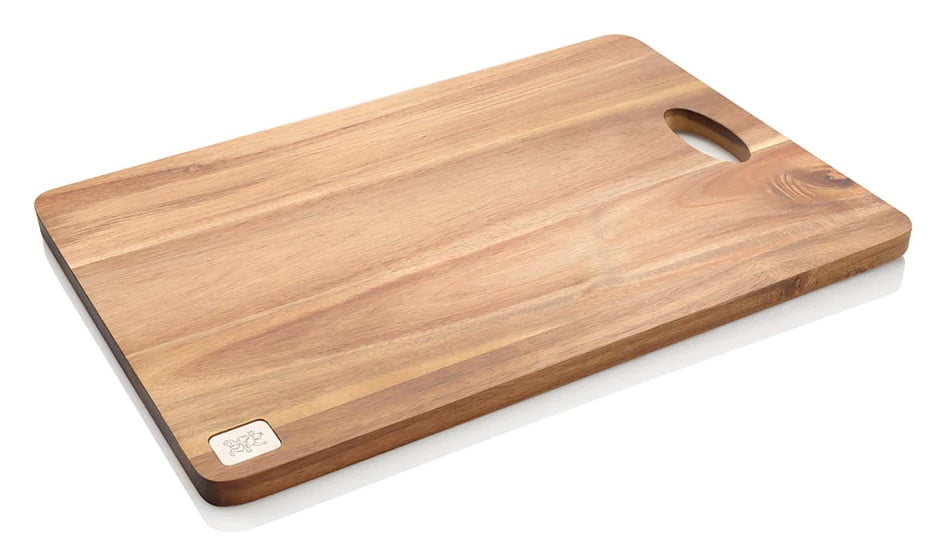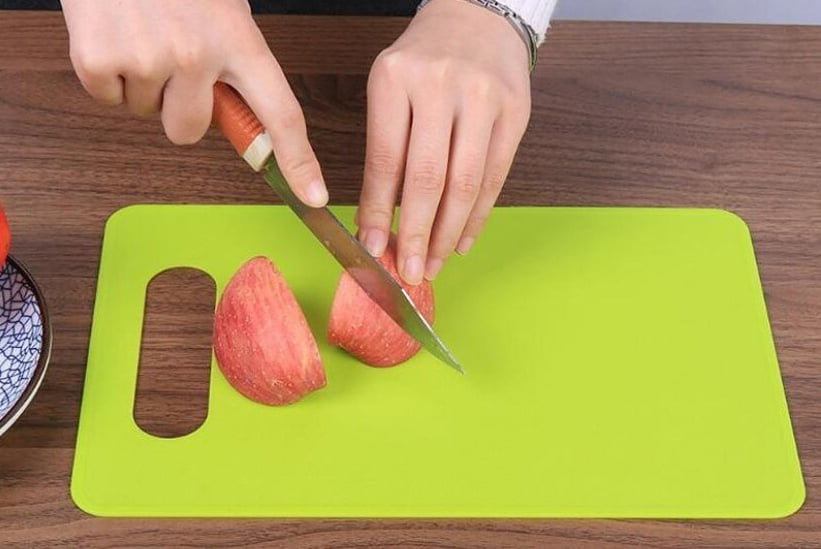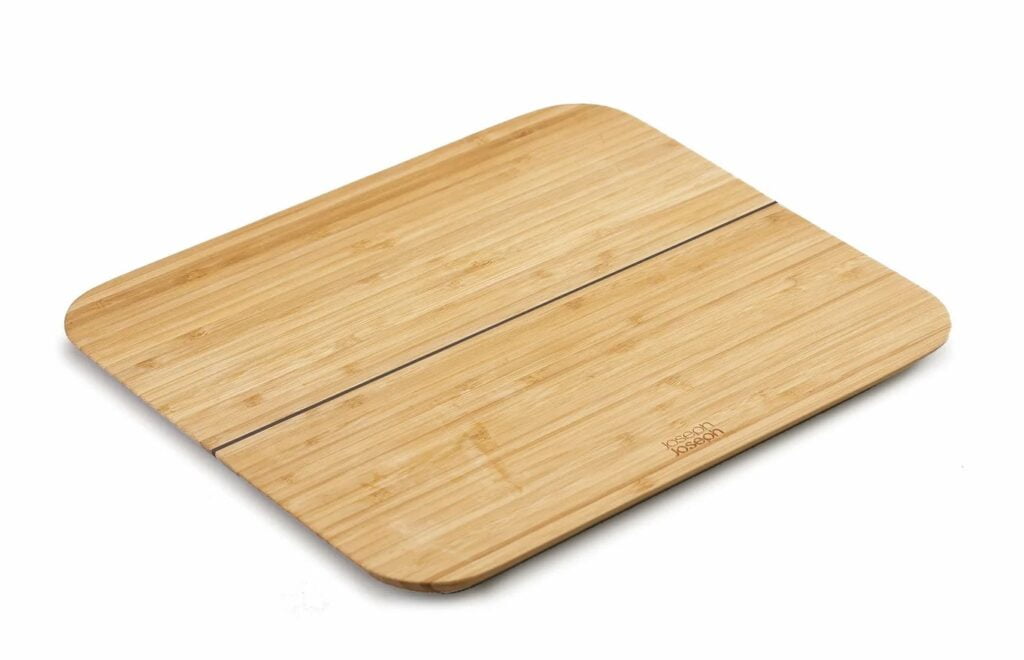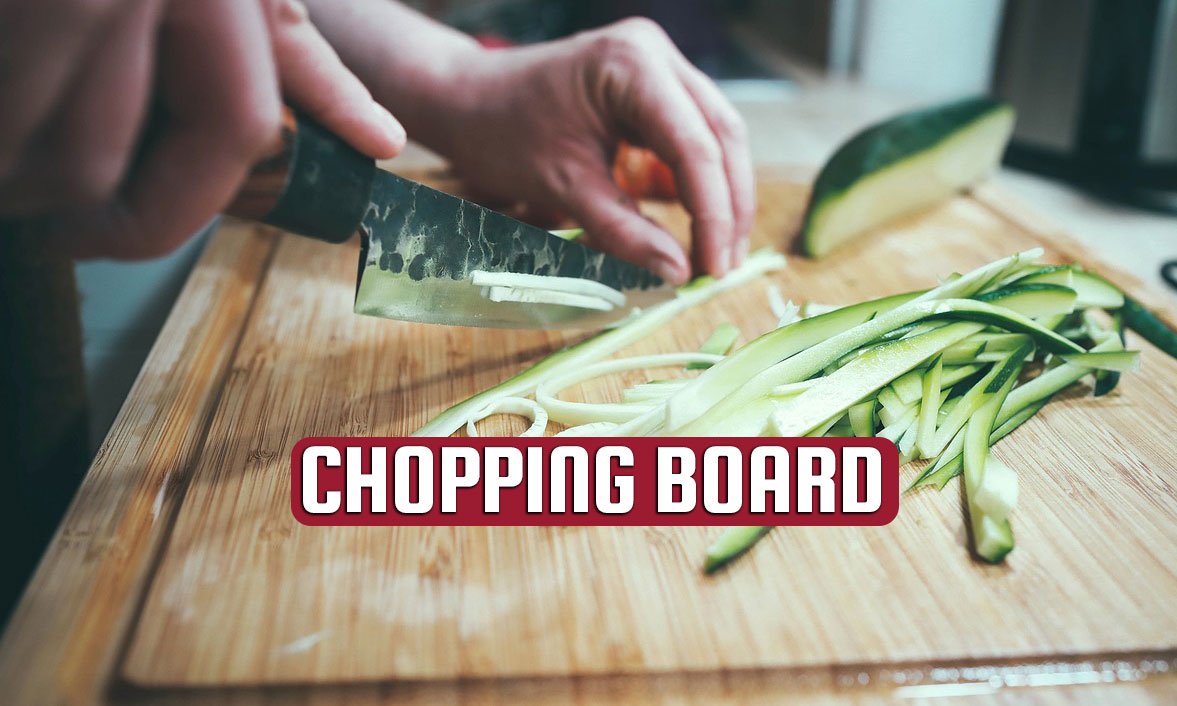I. Introduction
Setting the Stage with History
Chopping boards seems to be very simple but it carries a rich historical tapestry dating back to ancient civilizations. Imagine ancient civilizations where the act of food preparation was an art closely tied to culture and traditions. Early humans used flat stones and tree stumps as rudimentary surfaces to chop food. These early tools evolved into the earliest forms of cutting boards.
Table of Contents
Relevance in Modern Kitchens
Fast forward to the present day, cutting boards continue to hold an integral position in modern kitchens. Despite technological advancements and an array of kitchen gadgets, the trusty cutting board remains a cornerstone of food preparation. Its role may appear mundane, but it’s indispensable for ensuring cleanliness, preventing cross-contamination, and preserving the sharpness of knives.
II. Evolution of Chopping Boards
Primitive Beginnings
Early tools for food preparation were basic, involving stones and stumps that were sturdy enough to handle cutting and chopping tasks. The transition from these crude implements to more refined surfaces marked a significant turning point in culinary history. Wooden planks emerged as a more practical and versatile alternative, showcasing humanity’s progress in crafting tools for daily needs.
Cultural Significance
Across ancient civilizations, the cultural significance of cutting boards varied. In ancient Egypt, these boards were utilized in religious ceremonies and funerary rituals—a testament to their sacred symbolism. Meanwhile, in China, bamboo cutting boards were believed to bring good fortune and longevity to households, highlighting the cultural beliefs attached to different materials used for food preparation.
III. Chopping Boards Through the Ages
Medieval to Renaissance
Transitioning into the medieval era, wooden cutting boards took on a pivotal role in households, particularly in noble kitchens. These boards were meticulously crafted from beechwood or oak, reflecting the craftsmanship of the era. Artisans added their flair, sometimes incorporating ornate carvings, making them not just tools but expressions of artistry.
Industrial Revolution & Mass Production
The Industrial Revolution ushered in a new era of manufacturing. While it facilitated mass production of cutting boards, it also brought about a shift. The convenience of mass-produced boards came at the expense of traditional craftsmanship. However, it democratized access to these essential kitchen tools, making them more accessible to the general populace.
The historical journey of chopping boards offers a fascinating glimpse into the evolution of culinary practices and the intertwining of craftsmanship, culture, and innovation over the centuries. These seemingly humble tools have played a pivotal role in shaping how we prepare and appreciate food from ancient times to the present day.
IV. Crafting Modern Cutting Boards
Revival of Handcrafted Boards
In recent years, there’s been a fascinating resurgence in handmade, artisanal cutting boards. Crafted by skilled artisans, these boards showcase a harmonious blend of functionality and artistry. Modern craftsmen meticulously select premium woods like maple, walnut, and cherry, focusing not just on durability but also on aesthetic appeal. The attention to detail is remarkable, with intricate patterns, contrasting wood grains, and expert finishing techniques that turn these boards into stunning kitchen centrepieces.
Sustainability & Eco-Friendly Choices
A growing concern for the environment has led to a shift towards eco-friendly materials in cutting board production. Bamboo, known for its rapid growth and sustainability, has gained popularity. Reclaimed wood is another eco-conscious choice, utilizing salvaged wood that would otherwise go to waste. These materials offer durability and style while minimizing the environmental footprint, aligning with the ethos of sustainability in modern households.
V. Types of Chopping Boards
Wooden Boards

Wooden cutting boards remain a popular choice due to their natural advantages. They possess self-healing properties, wherein shallow cuts on the surface close up over time. Optimal wood choices include hard, tightly grained woods like maple and teak, known for their durability. To maintain wooden boards, regular oiling with food-grade mineral oil is recommended to prevent warping and maintain the wood’s quality.
Plastic Boards

Plastic cutting boards offer practicality, being non-porous and easier to sanitize. They’re dishwasher-safe and allow the use of harsher cleaning agents without damage. However, maintaining plastic boards involves thorough cleaning after each use to prevent bacterial buildup in any surface imperfections. Replacement might be necessary if the boards become deeply scored or damaged.
Other Materials

Boards made from bamboo, silicone, glass, and steel each come with their own set of characteristics. Bamboo boards, despite misconceptions, might not possess antimicrobial properties, while silicone offers knife-friendly, heat-resistant surfaces. Glass and steel boards, while easy to clean, can dull knife edges due to their hardness. Understanding the unique features of these materials helps in making an informed choice based on personal preferences and needs.
VI. Hygiene and Care Tips
Cross-Contamination Prevention
Preventing cross-contamination is crucial. Following color-coding standards for different food types—blue for seafood, red for raw meat, green for vegetables—helps reduce the risk of bacteria transfer. Using separate boards for different food categories ensures food safety in the kitchen.
Maintenance Guidelines
For wooden boards, regular oiling and proper drying are essential to prevent warping and bacteria growth. Plastic boards need thorough cleaning after each use to avoid bacterial buildup. Boards made from different materials require specific care instructions to maintain their longevity and hygiene standards.
VII. Conclusion: The Timeless Appeal of Cutting Boards
The journey of cutting boards from their ancient origins to modern-day showcases their enduring importance in culinary practices. Their timeless significance lies in their ability to blend tradition with innovation, and craftsmanship with functionality. Today’s cutting boards, whether handcrafted works of art or eco-conscious choices, continue to play a pivotal role in kitchens worldwide, embodying the essence of tradition, sustainability, and practicality.

